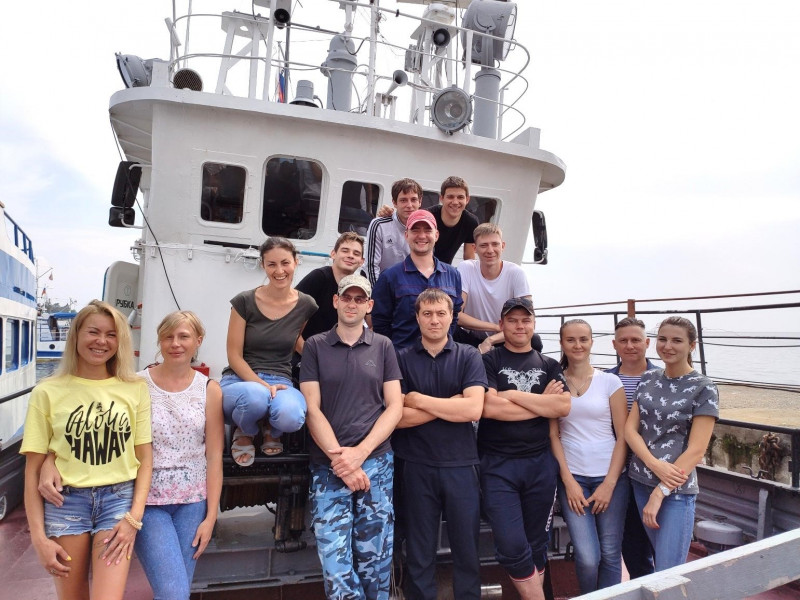Expedition onboard the RV “G. Titov”, August 2-11, 2020
The expedition within the program “Microbial and Viral Communities in Biofilms of Freshwater Ecosystems: Taxonomic Diversity, Functioning Features and Biotechnological Potential” was carried out onboard the RV “G. Titov”, August 2-11, 2020, in the littoral zone of Lake Baikal near the Listvyanka settlement, Varnachka Valley, opposite the Bolshoye Goloustnoye settlement, near Aya Bay and the Olkhonskiye Vorota Strait as well as in bays of the Maloye More Strait, Chivyrkuy and Barguzin bays, near the Turka River, the Babushkin town, the Tankhoy and Vydrino settlements, the Baikalsk and Slyudyanka towns, and the Kultuk settlement.
The aim of the expedition was to obtain the data on the quantitative distribution of hygiene indicator microorganisms in Lake Baikal, determine the genetic diversity, physiological and biochemical characteristics, ecological features of opportunistic bacteria and isolate autochthonous viruses as a new trophic layer in the ecosystem of Lake Baikal.
The planned fieldworks were not completely fulfilled due to weather conditions. At 8 stations, 36 water samples were taken to determine chemical parameters, temperature, pH, electrical conductivity, the total number of bacteria, chlorophyll and cultivated groups of microorganisms (more than a thousand inoculations) as well as for molecular genetic studies of bacterial and viral communities. At 40 stations, 165 samples of water and sand were taken to record the hygiene indicator microorganisms in the ecosystem of Lake Baikal (~1400 inoculations). Five net samples were taken to concentrate Baikal phytoplankton; the concentrated biomass (volume 100-150 ml) was frozen for the subsequent determination of the variants of cyanobacterial toxins in Baikal phytoplankton.















